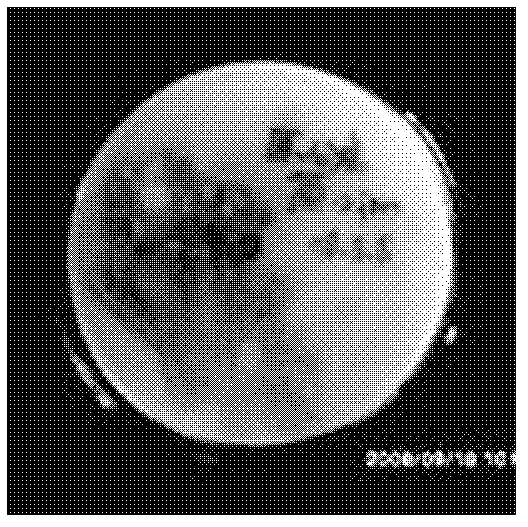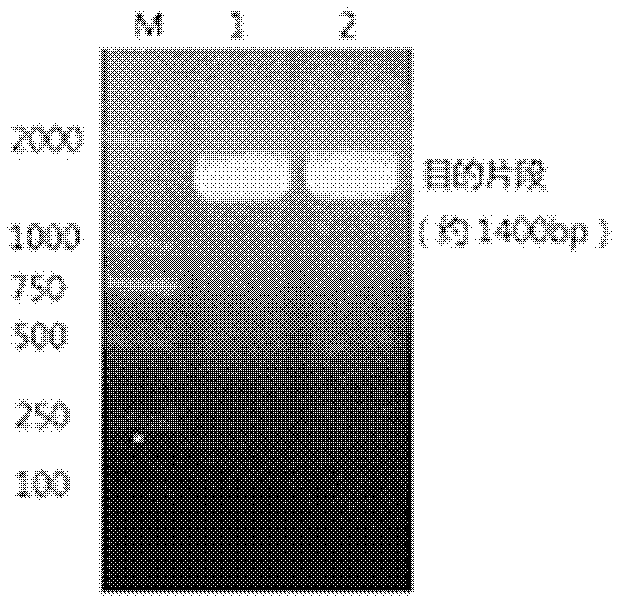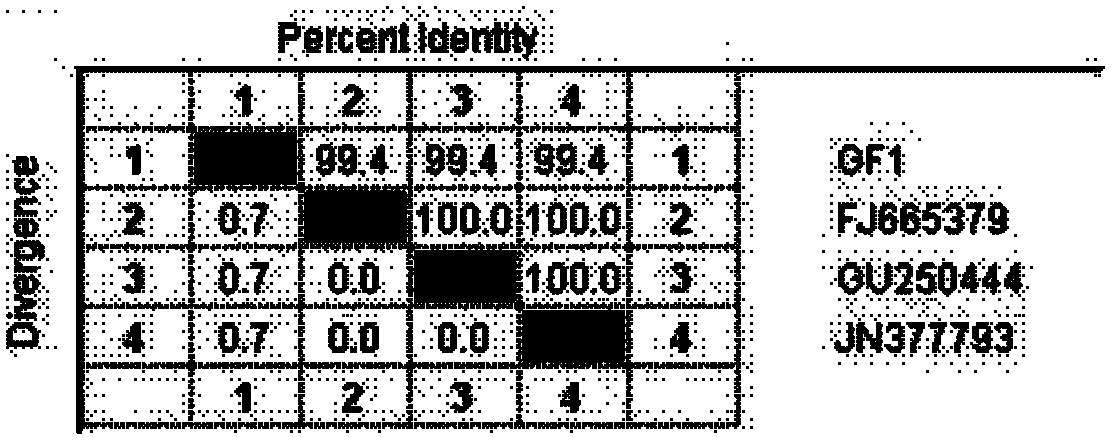Acid-producing bacillus cereus and application thereof
A technology of Bacillus cereus and Bacillus subtilis, which is applied in the fields of application, bacteria, and microorganisms, can solve problems that have not yet been reported on acid-producing Bacillus cereus, and achieve enhanced total antioxidant levels, reduced breeding costs, and improved The effect of feed compensation
- Summary
- Abstract
- Description
- Claims
- Application Information
AI Technical Summary
Problems solved by technology
Method used
Image
Examples
Embodiment 1
[0039] Example 1 Screening and other studies of acidogenic bacillus
[0040] 1. Screening of acidogenic bacillus
[0041] 1 test material
[0042] 1.1 Separation source: chicken intestine, chicken manure, pig manure, cow manure
[0043] 1.2 Medium:
[0044] 1.2.1 Culture medium for strain isolation
[0045] Basal medium: yeast extract 0.5%, peptone 0.5%, glucose 0.5%, dipotassium hydrogen phosphate 0.5%, magnesium sulfate 0.02%, manganese sulfate 0.08%, calcium carbonate 1.5%, agar 1.5%.
[0046] 1.2.2 Medium for strain culture
[0047] Seed medium: 0.1% yeast extract, 0.1% peptone, 0.1% glucose, 0.1% potassium dihydrogen phosphate, 0.02% magnesium sulfate, 0.02% manganese sulfate, pH 7.0-7.5.
[0048] Fermentation medium (basic): 0.5% yeast extract, 0.5% peptone, 0.5% glucose, 0.5% dipotassium hydrogen phosphate, 0.02% magnesium sulfate, and 0.08% manganese sulfate.
[0049] 2 strain screening
[0050] 2.1 Isolation and purification method of acidogenic spores: use str...
Embodiment 2
[0214] The industrial large-scale production technology of embodiment diacidogenic bacterium
[0215] The fermentation culture formula of acidogenic bacillus liquid industrial mass production is as follows:
[0216] Seed medium: yeast extract 0.5%, peptone 0.6%, glucose 1.0%, dipotassium hydrogen phosphate 0.5%, magnesium sulfate 0.02%, manganese sulfate 0.08%.
[0217] Liquid fermentation medium: corn flour: 3.0%, soybean flour: 3.2%, bran: 2.5%, ammonium sulfate: 0.8%, magnesium sulfate: 0.01%, disodium hydrogen phosphate: 1%, sodium dihydrogen phosphate: 0.075% , Trisodium lemon: 0.1%.
[0218] The production process of acidogenic spores is as follows:
[0219] (1) First-class seeds: inoculate on a slant, fill 100mL in a 500mL triangular flask, culture at 35°C, 220rpm on a shaker for 14 hours; insert second-class seed solution for expansion.
[0220] (2) Secondary seeds: 1L in a 5L triangular flask, 6% inoculum, 35°C, 220rpm shaker culture for 16 hours; access to the thi...
Embodiment 3
[0223] Example 3 Application Test of Composite Probiotics M3
[0224] The compound micro-ecological preparation M3 is often a combination of several strains of probiotics in order to better play the role of probiotics. In order to apply acidogenic bacillus GF1 to production and as a theoretical basis for its use in granular materials, a compound micro-ecological preparation was designed. Ecological formulation M3.
[0225] 1. Compound probiotic preparation M3 formula
[0226] This product consists of three high-temperature-resistant strains of Bacillus subtilis N9-1-35 (5 × 10 8 cfu / g) (preserved in China Center for Type Culture Collection on August 31, 2011, its preservation number is: CCTCC M 2011301), Clostridium butyricum Cb-2 (5×10 8 cfu / g) (preserved in China Center for Type Culture Collection on November 09, 2011, its preservation number is: CCTCC M2011384), Acidogenic Bacillus GF1 (1.0×10 9 cfu / g) and corn starch (commercial name: corn starch; product number: 692042...
PUM
| Property | Measurement | Unit |
|---|---|---|
| diameter | aaaaa | aaaaa |
| diameter | aaaaa | aaaaa |
| diameter | aaaaa | aaaaa |
Abstract
Description
Claims
Application Information
 Login to View More
Login to View More - R&D
- Intellectual Property
- Life Sciences
- Materials
- Tech Scout
- Unparalleled Data Quality
- Higher Quality Content
- 60% Fewer Hallucinations
Browse by: Latest US Patents, China's latest patents, Technical Efficacy Thesaurus, Application Domain, Technology Topic, Popular Technical Reports.
© 2025 PatSnap. All rights reserved.Legal|Privacy policy|Modern Slavery Act Transparency Statement|Sitemap|About US| Contact US: help@patsnap.com



